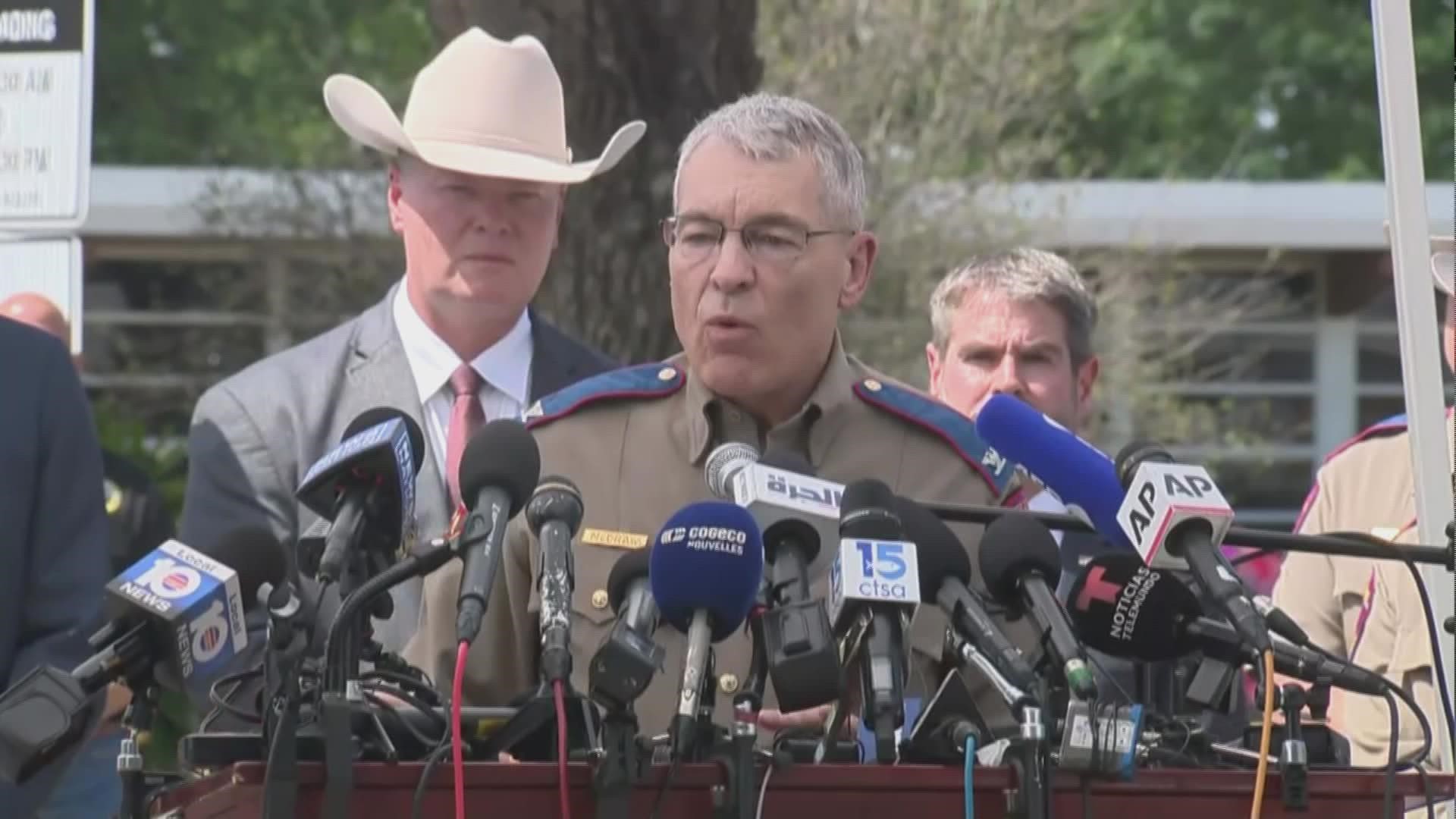UVALDE, Texas — During a press conference in Uvalde Friday, Texas Department of Public Safety (DPS) Executive Director Steven McCraw said police officers did not immediately breach the classroom where a shooter had killed students at Robb Elementary School.
McCraw called it a "wrong decision, period."
During the press conference, McCraw said the commanding officer at the scene viewed the situation as a barricaded suspect, not an active shooter. McCraw said 19 police officers were inside the school but didn't breach the classroom door, where Salvador Ramos was located, for about an hour.
The commander believed Ramos was barricaded inside of a classroom and that children were not at risk.
However, children and teachers had repeatedly called 911 during the attack.
Students call 911 during the attack
Ramos entered the school through a door that was propped open at 11:33 a.m. He began shooting into a classroom, firing more than 100 rounds, according to McCraw.
At 11:35 a.m., three Uvalde police officers entered the building and were then joined by four others.
Shortly after noon, McCraw said there were at least 19 officers inside the hallway outside of the classroom where Ramos was believed to be in.
During a press conference on Friday, McCraw read through several transcripts of 911 calls students made during the attack.
12:03 p.m. A student calls 911, identifies herself and whispers "she's in Room 112." The call lasts one minute and 23 seconds.
12:10 p.m. The same student calls back and said there were multiple dead.
12:13 p.m. The same student calls back.
12:16 p.m. The same student calls back and says there are eight to nine students alive.
12:19 p.m. A 911 call is made by another person, located in Room 111. The unidentified student hung up when she was told by someone else to hang up.
12:21 p.m. Another 911 call is made and shots could be heard in the background of the call.
12:36 p.m. A 911 call was made from the first student who called 911. The call lasts 21 seconds and the caller tells 911 that "he" shot the door.
12:43 p.m. The student asks 911 to "please send the police now."
12:46 p.m. The student tells 911 that she could hear the police next door.
12:50 p.m. Shots could be heard over the 911 call and it sounds like officers are moving children out of the classroom
Active shooter vs. Barricaded suspect
Would police response have been different if officers were responding to an active shooter call, rather than a barricaded suspect?
According to the Federal Bureau of Investigation, an active shooter is "an individual actively engaged in killing or attempting to kill people in a populated area." The International Association of Chiefs of Police defines a barricaded individual as a person "who has taken a position in a physical location" that doesn't allow immediate police access and refuses to exit or follow police commands.
McCraw said the commanding officer at the scene believed they needed equipment and more officers to do a tactical breach of the classroom where Ramos was located.
"When there's an active shooter, the rules change," McCraw said. "It's no longer a barricaded subject. You don't have time."
McCraw acknowledged the scrutiny of law enforcement response time in the incident, but said "Texas embraces active shooter training."
According to a Texas Commission on Law Enforcement course on active shooter response, first responders must be "prepared to meet violence with controlled aggression."
Following the Columbine High School shooting in 1999, law enforcement no longer waits and sets a perimeter during an active shooter situation, but instead is trained to enter and subdue the shooter.
McCraw said there was "no excuse" for the delay in the Uvalde shooting, stating that while he wasn't there, an entry should have been made as soon as possible.
"Every officer lines up, stacks up, goes and finds where those rounds are being fired at and keep shooting until the subject is dead," McCraw said.

